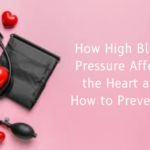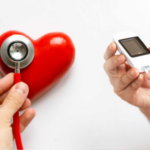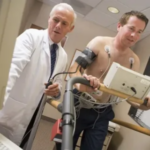
When it comes to heart attacks, recognizing the symptoms and acting quickly can mean the difference between life and death. In this article, we’ll discuss the signs and symptoms of a heart attack, what to do in an emergency and how to reduce your risk of having one.
Introduction:
Dr. Rahul Gupta, an interventional cardiologist, knows first-hand the importance of recognizing the signs of a heart attack and taking swift action. According to the American Heart Association, someone in the United States has a heart attack every 40 seconds, making it a leading cause of death. However, many people may not recognize the symptoms or hesitate to seek medical attention, which can have devastating consequences.
What is a Heart Attack?
A heart attack, also known as myocardial infarction, occurs when the blood flow to a part of the heart is blocked, usually by a blood clot. Without prompt treatment, a heart attack can cause permanent damage to the heart muscle or even lead to death. Heart attacks are a medical emergency that has to be attended to right now. Every year, thousands of people die from heart attacks and many more suffer long-term complications. However, with timely recognition of the symptoms and quick action, many lives can be saved. In this blog post, we will discuss the signs and symptoms of a heart attack and what you should do in an emergency.
Signs and Symptoms of a Heart Attack
When the blood flow to the heart muscle is cut off, a heart attack happens.This can happen due to the build-up of plaque in the arteries, which can cause a blood clot to form and block the flow of blood.
The signs and symptoms of a heart attack can vary from person to person but some common ones to look out for include:
Discomfort in the chest that might feel like pressure, squeezing, or fullness. Pain or discomfort in other areas of the upper body, such as the arms, back, neck, jaw or stomach
Shortness of breath, with or without chest pain
Sweating, light-headedness, or nausea
It’s important to note that not everyone experiences chest pain during a heart attack and some people may only have mild symptoms or no symptoms at all. This is why it’s crucial to pay attention to any unusual symptoms and seek medical attention immediately if you suspect a heart attack.
What to Do in an Emergency
If you or someone else is experiencing the symptoms of a heart attack, it’s important to act quickly. Here are the steps to take in an emergency:
If you or someone around you is experiencing symptoms of a heart attack, it’s important to act quickly. Here are the steps to take in an emergency:
Call for Emergency Medical Services (EMS): Dial 911 or your local emergency number immediately. Don’t wait to see if the symptoms go away on their own, as every minute counts.
Stay calm and reassure the person: Let them know that help is on the way and that you’re there to support them.
Help the person take medication: If the person has been prescribed nitro-glycerine for chest pain, help them take it as directed.
Loosen tight clothing: Help the person remove any tight clothing, such as a tie or belt, that may be restricting breathing.
Monitor the person’s breathing and pulse: If the person stops breathing or becomes unresponsive, begin CPR if you’re trained to do so.
Follow the instructions of the EMS: When the EMS arrive, provide them with any information you have about the person’s symptoms and medical history.
Risk Factors for Heart Attack
While anyone can have a heart attack, certain risk factors can increase your chances of having one. These include:
Age (the risk increases as you get older)
Family history of heart disease
High blood pressure
High cholesterol
Smoking
Diabetes
Obesity
Lack of physical activity
If you have one or more of these risk factors, it’s important to take steps to reduce your risk of having a heart attack. This may include making lifestyle changes, such as quitting smoking, eating a healthy diet and getting regular exercise, as well as taking medication as prescribed by your doctor.
Conclusion
In conclusion, recognizing the symptoms of a heart attack and seeking immediate medical attention can save lives. Common symptoms include chest pain or discomfort, pain or discomfort in other areas of the upper body, shortness of breath, sweating, light-headedness, or nausea. If you or someone else is experiencing these symptoms, call for emergency medical services and follow the steps mentioned above. It’s also important to be aware of risk factors for heart attacks and take steps to reduce your risk, including making lifestyle changes and following your doctor’s recommendations.
If you have any concerns about your heart health, consult a qualified cardiologist like Dr Rahul Gupta. With a team of experienced and skilled cardiologists, Cardium offers advanced diagnostic and treatment options for a wide range of heart conditions. To know more, visit https://www.cardium.in/.




